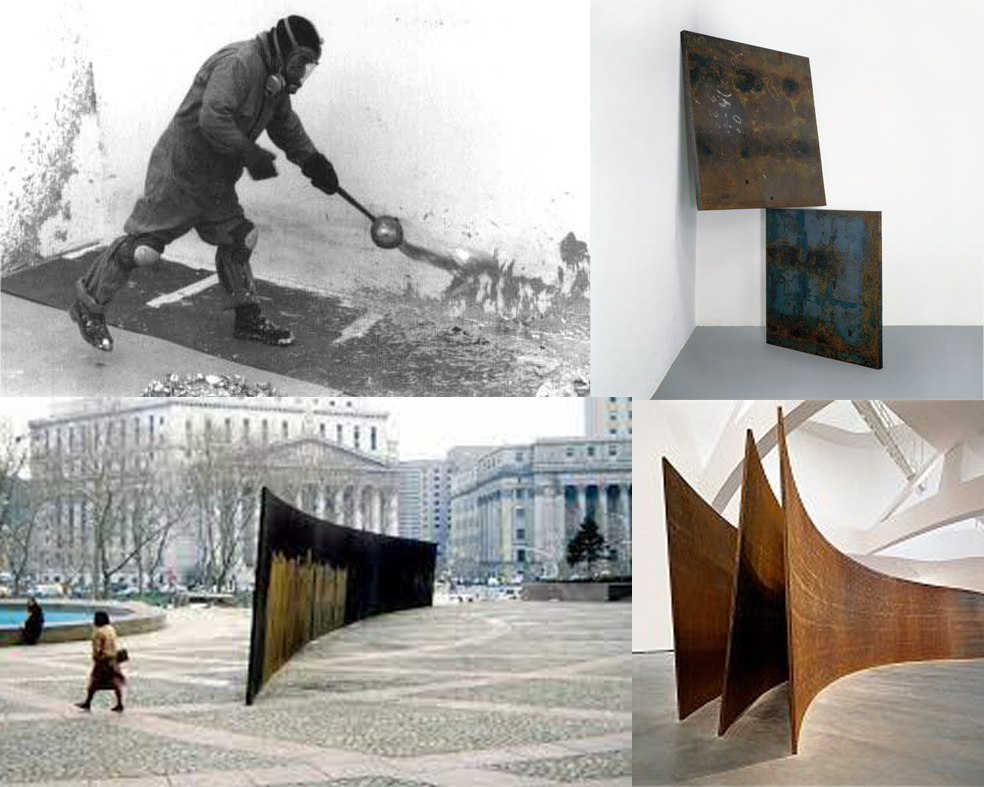Easier said than done

BLOG 005
Great artists who should have evolved or tried new things.
Easier said than done
Starting their careers with promise, Damien Hirst and Jeff Koons have seen little evolution in their work over the past decade; it's become more of the same, driven by commercial interests, as I see it, from my position. The Western art world continues to support them, I guess protecting their market value. However, I find Richard Serra's case more intriguing. Despite his impressive work in the Qatar desert in 2014, I question why artists, who I believe should be critical and engaged, collaborate with Middle Eastern regimes for oil money.
What astounds me is the remarkable creativity and boldness Richard Serra displayed in his early years, evident in his striking works with lead splashes and thick metal gestures, as seen in the photos I post here witht his blog:
These works were more minimalistic, site-specific, and daring, with a raw edge. I began noticing a change in his approach after his presentation at the Venice Biennale in 2001, where he received the Golden Lion. His subsequent works lack the same connection to the space, feeling overly grandiose and sterile. These are personal observations, and I acknowledge that critiquing art practice is not easy. While Serra remains a hero to me, I can't help but feel disheartened by the trend of many great artists resorting to repetitive spectacle, monopolizing the art world and stifling new talent.
It's not solely the artists' fault; the Western art world operates more and more like a business, prioritizing value over artistic growth. This focus on profit makes Western art predictable, sanitized, and ultimately shallow.
I wonder why Western modern and contemporary art institutions struggle to embrace change and veer in new directions. While it's understandable for artists to stick to what brings them success, it doesn't reflect the innovative spirit that made them great in the first place. However, I recognize that my critique may seem simplistic.